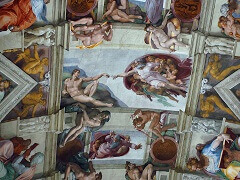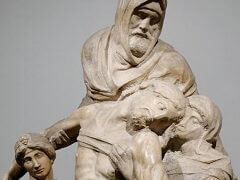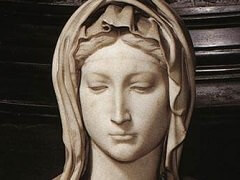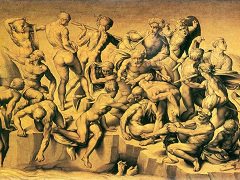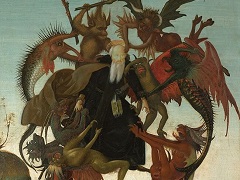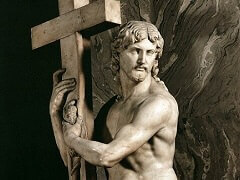Cupid, by Michelangel
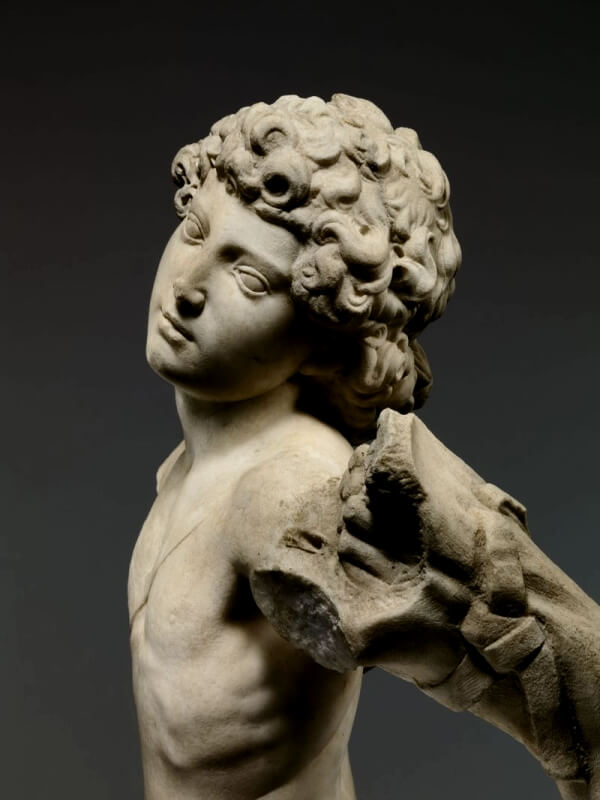
The Cupid has a slender body with very elongated proportions; the fact that his legs are missing from the knees down limits the viewer's perception, while the way the statue is currently mounted changes the tilt of the pose, originally off-balance in a backward direction. A leftover fragment near the left leg might be interpreted as a piece of the "vase" described by Aldrovandi. The movement of the missing arms, in the act of taking an arrow from the quiver shaped like an animal's paw and foreleg, accompanies the twisting of the adolescent torso, and culminates with the oblique rotation of the upturned head. There is some lack of harmony in the relationship between the full face under the cap of compact curls and the figures slender torso.
Signs of erosion due to atmospheric agents and, perhaps, traces of later interference have altered the face, especially on the right side. The connection between this work and the nude bronze statues by Bertoldo might explain the exotic and primordial suggestions, for instance, the protruding leonine quiver, as well as an interest in the adolescent body with several awkward passages - in disequilibrium. But some of the features of the image, which are obviously a nod to antiquity, point to Michelangelo's juvenalia: the tightly-massed curls in a compact dome reminiscent of the hair of the Bolognese Angel, the modeling of the torso, which undulates with increasingly uneven reliefs that visualize the tender anatomical structure as it accompanies the rotating movement, not unlike what can be seen in the wooden Crucifix.
The way the baldric tightly encircles the soft flesh, from which it had to be distinguished halfway up the figure's back, will again be seen in the straps and ribbons the artist uses to fasten his statues, beginning with the colossal David.


